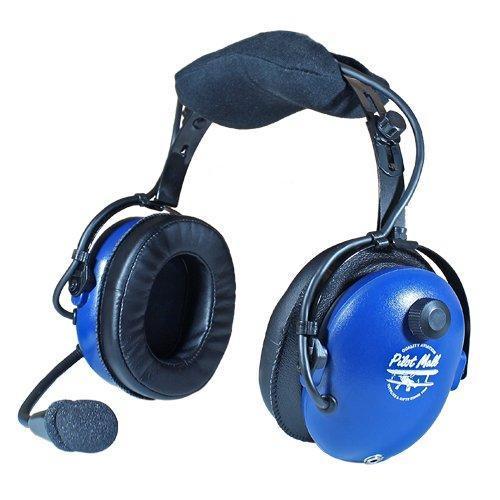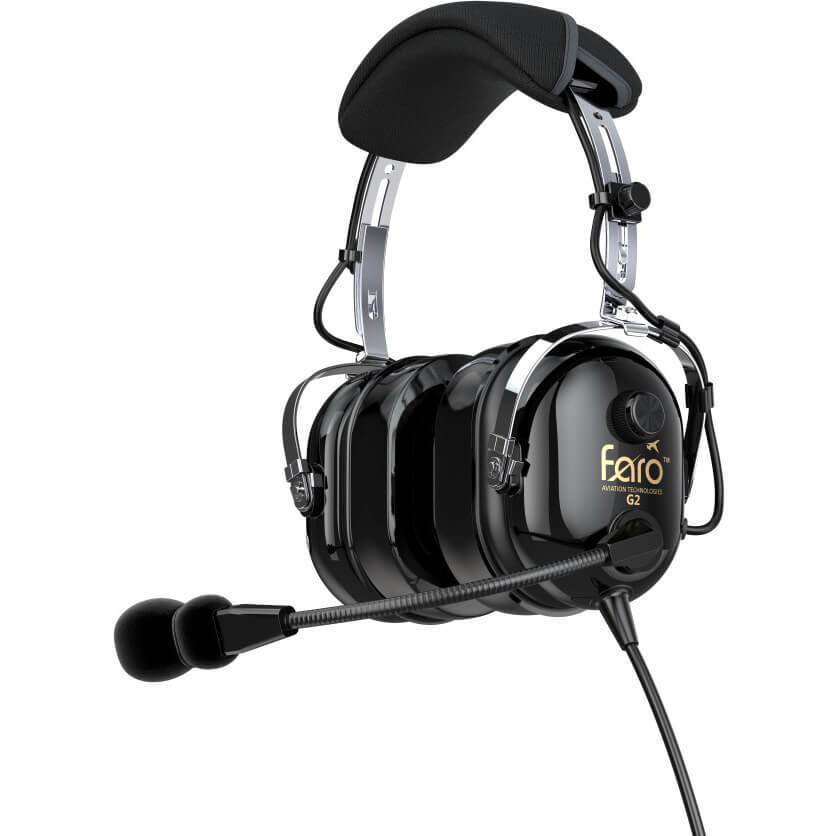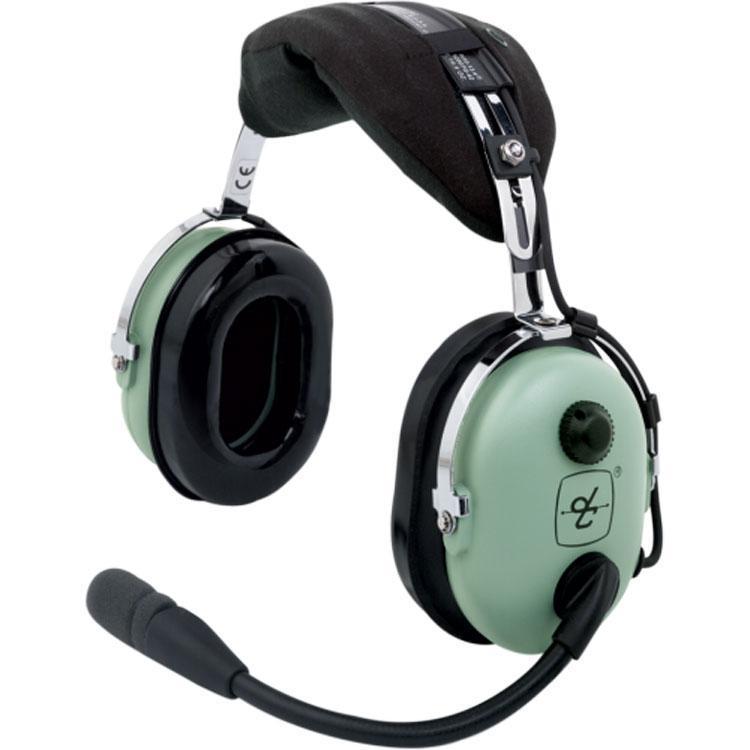Choosing the right aviation headset is an important decision for any pilot. As pilots we want comfort, clarity and reliability. On top of these three factors, we want the headset to fit within our budget.
Passive aviation headsets provide a straightforward, affordable and reliable solution to cockpit noise. They make sure you have clear and comfortable communications.
Let's take a look at what to keep in mind when searching for your next passive aviation headset.
SUMMARY
-
Passive headsets block noise using physical barriers.
-
Comfort features like lightweight designs and gel-filled ear seals.
-
Bluetooth options add versatility for pilots needing wireless connectivity.
-
Choose a headset that balances price, features, and warranty.

What Are Passive Aviation Headsets?
Passive aviation headsets use physical noise-blocking materials, like foam and padding, to reduce ambient sounds in the cockpit.
This sets them apart from active noise reduction (ANR) headsets, since they don’t rely on electronic components to cancel out noise. This makes these kinds of headsets simpler, more durable, and often more affordable.
Advantages of Passive Headsets:
- No batteries required, reducing the risk of dead headsets mid-flight.
- Lightweight and low-maintenance, making them ideal for everyday use.
- Typically less expensive than ANR headsets.
Passive headsets excel in quiet environments or for budget-conscious pilots, but they may not provide the same noise reduction in high-noise cockpits as ANR models. So keep that in mind.
Top Passive Aviation Headsets Comparison Table
Here’s a quick look at some of the most popular passive aviation headsets, their features, and what sets them apart:
Headset |
Price |
Warranty |
Weight (oz) |
Noise Reduction (dB) |
Features |
Comfort Rating |
|---|---|---|---|---|---|---|
|
$325 |
5 years |
20 |
24 |
Durable construction, M-1/DC microphone, wire boom for mic placement |
★★★★☆ |
|
$391.65 |
5 years |
16.5 |
23 |
Lightweight design, M-7A noise-canceling mic, flex boom, gel ear seals |
★★★★★ |
|
$398.45 |
5 years |
17 |
23 |
Stereo audio, M-7A mic, flex boom, gel ear seals, stereo/mono switch |
★★★★★ |
|
$635 |
5 years |
8 |
N/A |
Rest-on-ear design, dual volume controls, lightweight alloy headband |
★★★★☆ |
|
$448.20 |
5 years |
22 |
23 |
Adjustable headband pressure, dual volume controls, flex/wire boom |
★★★★☆ |
|
$189.99 |
3 years |
22 |
26 |
Budget-friendly, gel ear seals, flex boom, stereo audio |
★★★★☆ |
|
$199.95 |
Lifetime |
15.6 |
23 |
Affordable, flex boom, foam ear seals, stereo/mono switch |
★★★☆☆ |
|
$140 |
3 years |
15.9 |
24 |
Lightweight, flex boom, gel ear seals, stereo audio |
★★★★☆ |
|
$269 |
3 years |
14.9 |
24 |
Bluetooth connectivity, flex boom, gel ear seals, 20-25 hours battery life |
★★★★☆ |
|
$125 |
3 years |
15.4 |
24 |
Lightweight, flex boom, gel ear seals, stereo audio |
★★★★☆ |
|
$200 |
3 years |
15.9 |
24 |
Lightweight, flex boom, gel ear seals, stereo audio |
★★★★☆ |
|
$165 |
3 years |
14.9 |
24 |
Lightweight, flex boom, gel ear seals, stereo audio |
★★★★☆ |
|
$199 |
3 years |
15 |
25 |
Budget-friendly, flex boom, gel ear seals, stereo audio |
★★★★☆ |
Notes:
-
Noise Reduction (dB): Indicates the headset's ability to attenuate ambient noise.
-
Comfort Rating: Based on user reviews and ergonomic features, rated out of 5 stars.
-
Price: Approximate retail price as of November 2024; actual prices may vary.

Bluetooth and Wireless Options in Passive Headsets
While passive headsets have traditionally focused on simplicity, some now include wireless features like Bluetooth. These options can offer a lot of convenience for pilots who want to integrate their headsets with mobile devices, GPS systems, or other cockpit tools.
Pros of Bluetooth Passive Headsets:
- Hands-free connectivity for calls and music.
- Less cable clutter in the cockpit.
- Compatible with modern aviation systems.
Cons:
- May require charging or batteries for Bluetooth functionality.
- Slightly heavier than non-Bluetooth models.
Some models that stand out as Bluetooth-compatible include the Pilot USA Pro Max Passive Headset with Bluetooth, it combines the reliability of passive noise reduction with modern wireless features.

Comfort and Ergonomics in Long Flights
Flying for hours can strain even the most experienced pilot, so comfort should be a top priority when selecting a headset.
Key Factors for Comfort:
- Weight: Lighter headsets reduce neck and head fatigue during extended flights.
- Padding: High-quality ear cushions and headbands distribute pressure evenly, preventing sore spots.
- Fit: Adjustable designs ensure a snug fit without excessive clamping pressure.
Headsets like the David Clark H10-13.4 stand out for their lightweight and ergonomic design. These reason are why David Clark a favorite among pilots flying long routes.

Passive Noise Reduction Performance: What to Expect
These headsets provide effective noise reduction by creating a physical seal around the ears. However, their performance can vary based on cockpit noise levels and the headset’s design.
Tips for Evaluating Noise Reduction:
- Test the headset in a simulated cockpit environment to gauge its effectiveness.
- Compare the decibel (dB) ratings across models to identify the most noise-blocking option.
- Look for additional features, like double-layer ear seals, that enhance noise isolation.
While passive headsets like the David Clark H10-30 perform well in quieter cockpits, they may struggle in louder settings, such as helicopters or older aircraft.

Frequently Asked Questions
-
What’s the difference between passive and active aviation headsets?
Passive headsets block noise physically, while active headsets use electronics to cancel sound. -
Are passive headsets suitable for loud cockpits?
They work well in moderately noisy environments but may not match ANR headsets for extreme noise. -
Do passive headsets come with Bluetooth?
Some models, like the Pilot USA Pro Max, include Bluetooth for added convenience. -
How do I maintain a passive aviation headset?
Clean ear cushions regularly, store in a protective case, and check for wear on seals and headbands. -
What’s the average lifespan of a passive headset?
With proper care, most passive headsets last 5-10 years or more. -
Are there stereo versions available for passive aviation headsets?
Yes, many passive headsets, including the David Clark H10-13S, offer stereo versions, allowing pilots to enjoy enhanced sound clarity and a more immersive audio experience. -
Do passive aviation headsets have dual volume controls?
Yes, some models, such as the Pilot USA PA-1181T, feature dual volume controls, allowing pilots to adjust audio levels independently for each ear, ensuring personalized sound balance. -
Are there passive headsets suitable for helicopter pilots?
Yes, multiple variants of passive aviation headsets, including helicopter versions, are available. These models are specifically designed for the unique noise profiles in rotary-wing aircraft. -
Do all passive headsets come with a warranty?
Most passive aviation headsets, such as the David Clark headset, come with warranties ranging from 3 to 5 years, providing peace of mind for buyers.
Takeaway
Passive aviation headsets are a great choice for pilots who want affordable comfort and reliability. They block cockpit noise with simple materials like foam and padding. They are durable and easy to maintain.
Choose a lightweight headset with good noise reduction and features like gel ear seals or Bluetooth. Take your time, compare options, and find the one that fits your needs and budget best.
Happy flying!
Interested in More Aviation Gear?
Our guides are designed to help!
Did you find this article helpful?
Do you think we missed an important interview question? Let us know in the comments below!


 David Clark H10-30 Passive Headset
David Clark H10-30 Passive Headset David Clark H10-13.4 Mono Passive Headset
David Clark H10-13.4 Mono Passive Headset David Clark DC PRO-2 Passive Headset
David Clark DC PRO-2 Passive Headset David Clark H10-60 Passive Headset
David Clark H10-60 Passive Headset Faro G2 Passive Headset
Faro G2 Passive Headset ASA AirClassics HS-1A Passive Headset
ASA AirClassics HS-1A Passive Headset Pilot USA PA-1169T Passive Headset
Pilot USA PA-1169T Passive Headset Pilot USA Pro Max Passive Headset with Bluetooth
Pilot USA Pro Max Passive Headset with Bluetooth Pilot USA 1161 Passive Headset
Pilot USA 1161 Passive Headset Pilot USA PA-1181T Passive Headset
Pilot USA PA-1181T Passive Headset Pilot USA PA-1171T Passive Headset
Pilot USA PA-1171T Passive Headset





